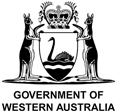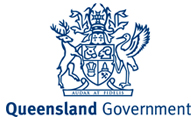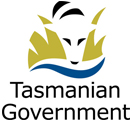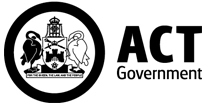Implementing a broadscale monitoring program
Broadscale monitoring programs (at catchment, regional or larger scales) usually aim to provide a broad or high-level assessment of the status of water/sediment quality to support community values across the spatial scale of the study. Clearly and effectively communicating the outcomes of the assessment to a diverse audience is often required.
In the Water Quality Guidelines we focus on how the Water Quality Management Framework can be used to implement broadscale monitoring programs for aquatic ecosystems. However, broadscale monitoring can be used to assess water/sediment quality for all community values (e.g. ecosystem health, crop irrigation, fisheries stocks, monitoring of the extent of toxic blue–green algal blooms).
Broadscale assessments can be useful for:
- environmental reporting (e.g. State of the Environment reports)
- rapid, cost-effective and adequate first-pass determination of the extent of a problem or potential problem (e.g. as applied to broadscale land-use issues or diffuse-source effluent discharges)
- screening of sites to identify locations needing more detailed investigation
- remediation programs being conducted over broad geographical areas.
Budget limitations will usually preclude the gathering of detailed quantitative information across large spatial scales. Instead, you can use cost-effective rapid approaches that can generate adequate first-pass data over large areas.
Assessments usually involve some level of averaging or smoothing of sparse measurements across large areas to highlight general trends or differences between regions. The data may be adequate for management purposes or to help managers decide what type of further information may be required.
Examine current understanding
For a broadscale assessment, current understanding will typically be developed at a high level to encompass the large spatial scale being assessed.
A conceptual model at such a large scale will need to consider multiple pressures that may potentially be influencing waterways, and the associated management strategies in place for them.
Incorporate any detailed conceptual models available for subregions into the overall current understanding.
Broadscale monitoring for State of the Environment reporting is commonly performed periodically, in which case current understanding will have been built up through successive cycles.
Where available, sources of information could include:
- other relevant previous investigations and scientific literature
- existing knowledge for inferring ecosystem condition (e.g. national parks or other protected areas that are likely to be in good ecosystem condition)
- detailed guidance for subregions in the larger study area (used to extrapolate to other subregions or as a reference for other subregions).
Stakeholder involvement is critical for documenting current understanding and developing conceptual models.
Use the conceptual model to identify the indicators for each of the key pressures, stressors and ecosystem receptors that need to be selected at Step 3 for the weight-of-evidence process that assesses the specific aims of the broadscale assessment.
Key concepts:
Define community values and management goals
You need to know the community values and more specific management goals (including level of protection) for the relevant waterways to appropriately identify the indicators and associated monitoring. These may have already been determined by the relevant jurisdiction, potentially as part of existing periodic broadscale monitoring and reporting programs.
If community values and management goals are not available, they will need to be established through stakeholder involvement.
Key concepts:
Define relevant indicators
Indicators are selected for the relevant pressures identified in the waterway (e.g. land clearing), their associated stressors (e.g. turbidity) and anticipated ecosystem receptors (e.g. phytoplankton).
Development or refinement of conceptual models, community values and management goals at Steps 1 and 2 forms the basis of the indicator selection.
Select a mix of indicators for the pressures, stressors and ecosystem receptors, consistent with using multiple lines of evidence in a weight-of-evidence process for assessing water/sediment quality. Using multiple lines of evidence ensures more comprehensive data coverage across large areas where data may be sparse.
We provide use-specific quality of evidence tables to assist with the selection of different lines of evidence and their indicators.
For broadscale monitoring, cost-effective tools sufficient to generate first-pass data over large areas are ideal. Examples include:
- omics
- rapid biological assessment
- remote sensing
- stable isotopes
- telemetry monitoring
- videography.
Some indicators and measurement programs may already be in place from existing periodic monitoring and reporting programs.
You may commence or continue monitoring at this step to:
- establish or add to baseline data
- test and validate relevant indicators
- refine associated sampling methodologies.
These monitoring data will be used to assess water/sediment quality (at Step 6).
Key concepts:
Determine water/sediment quality guideline values
Determine the water/sediment quality guideline values for the relevant indicators selected at Step 3.
National, state or regional default guideline values (DGVs) will typically be selected for a broadscale assessment, unless guideline values have already been determined for specific issues in the study area (e.g. site-specific or catchment guideline values).
Key concepts:
Define draft water/sediment quality objectives
To define the draft water quality objectives (or sediment quality objectives), select the guideline values and/or narrative statements at Step 4 for each indicator selected at Step 3 that should ensure the protection of all identified community values and their management goals (Step 2). Choose the most stringent of the guideline values for the water/sediment quality objectives (W/SQOs).
Take into account existing catchment or regional W/SQOs developed for any relevant water quality management plans or for specific issues in the study area.
At this stage, these are aspirational objectives that have not yet accounted for cultural, economic and social considerations (at Step 8).
Key concept:
Assess if draft water/sediment quality objectives are met
Compare the water/sediment quality monitoring data for each relevant indicator with the water/sediment quality objectives (W/SQOs), together with the evidence from any additional lines of evidence.
Use the results to assess water/sediment quality, including:
- whether or not the W/SQOs have been met
- the cause and spatial extent of any change observed.
Use a weight-of-evidence process to evaluate the various lines of evidence. This process evaluates the results from multiple lines of evidence across the pressures, stressors and ecosystem receptors included in the monitoring program. It is the key process by which the protection or status of the aquatic ecosystem is assessed.
Multiple potential outcomes are possible from a weight-of-evidence evaluation. We provide guidance on their interpretation for this use of the Water Quality Management Framework in use-specific evaluation tables.
It is common for broadscale assessments to use a scoring system that encapsulates a weight-of-evidence evaluation into a single score, or small number of scores, to indicate the status of aquatic ecosystem health. This should be presented in a manner that is readily conveyed to a wide audience and aids in comparison of results amongst different waterways and their associated waterways. Scores can be used to classify regions or systems in terms of acceptability of that status. This facilitates comparisons to previous evaluations to assess trends over time, especially in relation to key pressures.
The resulting evaluation will usually include classifying waterways in the overall study area as:
- those that meet the W/SQOs
- those that do not meet the W/SQOs or for which adverse trends are evident
- those for which the outcome is uncertain.
The W/SQOs are deemed to be met when:
- those lines of evidence considered as essential for informing acceptable water/sediment quality are met
- results for other supporting lines of evidence are consistent with no compromise to current or future water/sediment quality.
If the W/SQOs are met, then management should focus on maintaining or improving that quality. This will require a check of any possible improvements to management strategies at Step 8, and then implementation at Step 10.
A weight-of-evidence evaluation will otherwise conclude that:
- W/SQOs are not met
- adverse trends are evident
- result is inconclusive (e.g. due to difficulties in obtaining sufficient good quality monitoring data or if there is conflicting evidence from separate lines of evidence).
In these cases, up to 3 options are available:
- formulate, assess and prioritise management strategies to improve water/sediment quality (Steps 8 to 10), and/or
- reassess the appropriateness of the water/sediment quality guideline values (Step 7), and/or
- consider selection of additional or alternative indicators or lines of evidence (Step 7).
A weight-of-evidence evaluation in a broadscale monitoring program may require multiple cycles of reporting before clear outcomes are identified, and before one or more of the 3 options can be implemented.
Key concepts:
Consider additional indicators or refine water/sediment quality objectives
You may want to refine the water/sediment quality objectives (W/SQOs) if the evaluation at Step 6 indicates:
- the draft or existing W/SQOs have not been met, or
- the evaluation is ambiguous (e.g. there is uncertainty that draft or existing W/SQOs can be met in the future).
Use the better-quality system data gathered throughout the monitoring program (Steps 3 to 6) or specific ecological-effects studies to make any refinements.
Alternatively — or in addition — you could include additional relevant lines of evidence and associated indicators (via Step 3) if the weight-of-evidence evaluation at Step 6 showed:
- insufficient lines of evidence to make an assessment of suitable quality, or
- one or more of the selected indicators proved impractical to implement or failed to provide evidence of sufficient certainty or sensitivity.
Studies required to refine W/SQOs or include additional lines of evidence at this step may not necessarily be lengthy, and may include:
- implementing additional monitoring
- continuation or refinement of existing monitoring
- dedicated laboratory or field-effects studies, to establish more relevant indicators or water/sediment quality guideline values.
In practice, Steps 7 and 8 are likely to be conducted in parallel.
The costs and practicalities of refining W/SQOs or implementing additional lines of evidence for broadscale monitoring programs will mean that it will be uncommon for an immediate loop back from Step 7 to Step 3 to occur. Instead, the outcome of this step will be carried forward to the next round of monitoring and assessment.
Key concepts:
Consider alternative management strategies
You may need to consider alternative management strategies for the relevant pressures to improve water/sediment quality if the evaluation at Step 6 indicated that:
- draft or existing water/sediment quality objectives had not been met, or
- water/sediment quality is trending towards or indicative of increased risk to aquatic ecosystem health.
Details of alternative management strategies are unlikely to be determined as part of a broadscale assessment, although recommendations can be made. Alternative management strategies would more commonly be assessed as a separate process, such as the development of a water quality improvement plan.
At this stage of broadscale monitoring, proceed to Step 10 for reporting.
Assess if water/sediment quality objectives are achievable
Details of whether or not the water/sediment quality objectives can be met based on any refinements during Steps 7 and 8 will typically not be determined as part of a broadscale monitoring program. This assessment, together with implementation of any agreed management strategies (at Step 10) is more commonly undertaken as a separate process, such as developing a water quality management plan.
At the next cycle of monitoring and reporting, you will evaluate the success of any subsequent management actions and improve understanding of broadscale issues.
Implement agreed management strategy
For studies of this nature, it is important to clearly communicate the outcomes by reporting to all stakeholders at this step (stakeholder involvement).
Implications for the broadscale monitoring program may have arisen from the considerations at Steps 6 and 7, and these should be used to refine the monitoring project or programs.
Recommendations on alternative management actions from Step 8 need to be incorporated into the relevant management plans, which should include a suitable and agreed adaptive management process.
Key concepts:









